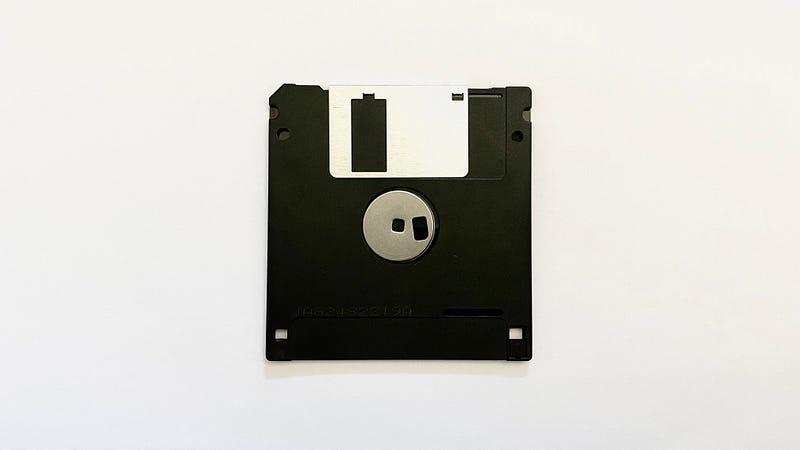TECHNOLOGY
It’s time to say goodbye to Post-it notes.

Mitch Kapor once said that getting information off the internet is like taking a drink from a fire hydrant. Today, I think that is something that we can all relate to. There is so much information available to us, and we consume so much of it that it’s nothing short of a miracle if we can recall that information again when we need it.
Lately, I’ve been reading Thiago Forte’s new book, Building a Second Brain. Forte has devised a digital filing system that you can use to capture, organize and distill the best of what you consume online. The process frees up your mind for creative thoughts and puts the task of long-term storage in the hands of apps and services that are better suited for that purpose.
In this article, I will focus on the first part of that system: capturing digital content. Almost everything that you consume online can be captured and stored in a digital filing system, and I’m going to show you how to do it.
https://jonathanwylie.medium.com/the-10-best-note-taking-apps-for-2022-3055cabe70b3
Websites and Online Articles
A “read it later” service like Pocket or Instapaper is a great way to store websites and articles that you can’t read right now. Both apps have desktop and mobile extensions that will quickly send any URL to your online account so that you can read it when you have more time.
Services like these are perfect for those idle moments while waiting in line at the grocery store or for filling time between projects. Simply open one of the articles you saved, read through it, and decide whether you want to add this to your second brain or not. If you do, click the Share arrow, and send it over to your notetaking app of choice.

Here on Medium, you can highlight meaningful text simply by clicking and dragging your cursor over the text you want to remember. It’s a great way to quickly find the most important information when you revisit the same article a week or a month from now. Medium members can also create and manage lists as a way to sort and organize the stories that are most valuable to them.
If you would rather read things on your Kindle, check out Amazon’s Send to Kindle service or the equally useful KTool. Both apps are designed to take an online article and import it into your Kindle Library. When you read it on your Kindle you can highlight and add notes as needed.
Ebooks
Speaking of Kindle, most ebook apps let you export your highlights and notes. In the Kindle app, you can export your highlights to flashcards for study practice, or you can email yourself a copy of all the notes you took in the app. You can copy and paste the notes from the email into a notetaking app for further organization.
There are also services like Clippings.io or Readwise. For a small monthly fee, you can sync them with popular notetaking apps like Evernote, Notion, and Roam to export all your highlights directly to the home of your second brain.

Audiobooks & Podcasts
Audiobooks are a convenient way to learn on the go. You can listen to a book while cleaning the house or when raking leaves in the yard. You can’t highlight them as you do with a Kindle or with a physical book, but you can still save the parts you want to remember.
Audible has a feature in the mobile app that lets you bookmark your favorite parts of a book. It’s called Clips. All you have to do is tap the Clip button in the Audible mobile app to add a virtual bookmark. You can also add notes to any clip to help you remember the context when you play it back later.

Many podcast apps have similar features. However, they will often delete episodes when they are done to save space on your phone, so you want to be sure that you save your selections before that happens.
Apps like Castro and Overcast let users share the link to an episode or share a link to the current time in an episode. This means you can copy that link and drop it straight into a note in your favorite notetaking app.
Overcast also has the option to share a clip. It lets you select up to 60 seconds of audio from a podcast and save it as a video file. You can do this as many times as you need to save the best information you get from a podcast episode.
https://jonathanwylie.medium.com/the-10-best-note-taking-apps-for-2022-3055cabe70b3
Social Media Posts
Social media apps like Twitter or Facebook have features that let you bookmark or save posts from others. This is a great way to capture things while you remember them, but a better solution is the share arrow.
Tap the share arrow on any post that inspires you and send it straight to the app you use for your second brain. Some apps will store it as a link, but others will embed the post to look just like it did on the website you saved it from.

YouTube Videos
If you find a video you like on YouTube, you can save it to a playlist. A playlist is like a folder for your favorite videos. They allow you to group videos by topic so that you don’t forget where they are on YouTube.
Playlists are great, but if you would rather keep everything in one place, you can copy the link for a YouTube video and paste it into a note in your favorite notetaking app. If you want to jump to a specific time in the video, right-click on the video and choose “Copy URL at current time” to get a URL that will jump you to that specific point in the video.
You can also use the Clip feature to share clips of up to 60 seconds from a video on YouTube. This is great for when you only want to grab a short part of a longer video. All you have to do is click the Clip button under a video and drag the sliders to select the part of the video you want to save. Next, click “Share clip” to get a URL you can drop into your notetaking app.

Finally, there are Transcripts. If you click the three dots next to the Save button, you can choose to show the transcript of a video. These are typically auto-generated and used for closed captions. However, you can copy this text and drop it straight into a note.
For a cleaner transcript that is easier to copy and paste, be sure to click the three dots in the corner of the transcript window and turn off the time stamps. This ensures you just get the text and no timestamps.

Audio Notes
If inspiration strikes and you don’t want to type out a long paragraph on your phone, you can use speech-to-text to capture your million-dollar ideas. You can do this on your phone or a smartwatch like the Apple Watch.
Speech-to-text is easy. All you have to do is launch a notetaking app on your smartphone and tap the microphone on the keyboard to begin dictating on your phone. It’s a quick and efficient way of gathering your thoughts.
Most smartphones also come with a built-in audio recorder. The one on the iPhone is called Voice Memos. You can use this like an old-fashioned dictaphone to capture audio of your big ideas and export your recording as an audio file when you are done.
Scanner Apps
Sometimes, the ideas that you want to capture don’t exist in a digital format. They could be notes on a whiteboard or a paper handout from a conference you attended. For times like these, there’s an app for that.
Scanner apps can capture analog information and turn it into a digital file that you can save in your second brain. Microsoft Lens, Scanner Pro, and Adobe Scan are all good examples of apps that can snap a picture of something and save it as an image or a PDF file.
Apple’s Notes app also has a built-in document scanner, while the Live Text feature in the iOS Photos app will even let you copy and paste text from a photo. If you’ve never tried it, you should!
https://jonathanwylie.medium.com/the-10-best-note-taking-apps-for-2022-3055cabe70b3
Bringing it All Together
While all of these tasks might seem like a lot of new apps to learn, the lesson here is not about downloading more apps. Instead, it’s about bringing everything together into one place: your second brain.
Almost all content can be saved in a digital format. If you learn how to do that and can export from one app and into another, you are well on your way to building a second brain that you can be proud of.
If you enjoy reading articles like this and want to support me as a writer, do what I did and sign up to become a Medium member! It’s just $5 a month, and it gives you unlimited access to everything on Medium. If you sign up using my link, I’ll earn a very small commission at no additional cost to you.
https://jonathanwylie.medium.com/the-10-best-note-taking-apps-for-2022-3055cabe70b3

